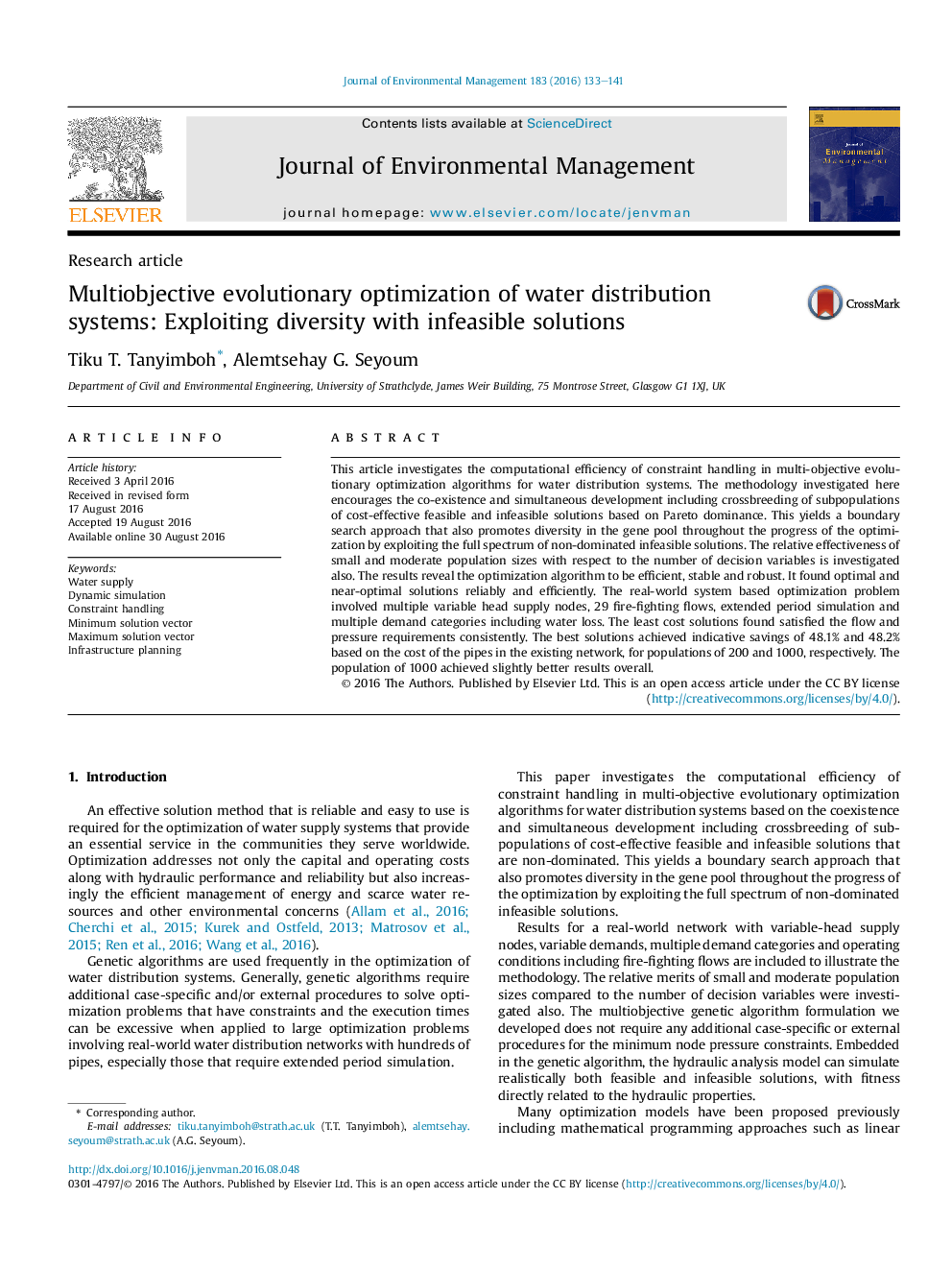| کد مقاله | کد نشریه | سال انتشار | مقاله انگلیسی | نسخه تمام متن |
|---|---|---|---|---|
| 5117297 | 1378121 | 2016 | 9 صفحه PDF | دانلود رایگان |
- A penalty-free genetic algorithm was assessed in a challenging real-world scenario.
- Infeasible solutions provided additional diversity in the gene pool throughout.
- Strict adherence to Pareto-dominance obviated excessive loss of diversity.
- The minimum and maximum solution vectors bracketed the feasibility boundaries.
- The minimum and maximum solution vectors enriched the initial population.
This article investigates the computational efficiency of constraint handling in multi-objective evolutionary optimization algorithms for water distribution systems. The methodology investigated here encourages the co-existence and simultaneous development including crossbreeding of subpopulations of cost-effective feasible and infeasible solutions based on Pareto dominance. This yields a boundary search approach that also promotes diversity in the gene pool throughout the progress of the optimization by exploiting the full spectrum of non-dominated infeasible solutions. The relative effectiveness of small and moderate population sizes with respect to the number of decision variables is investigated also. The results reveal the optimization algorithm to be efficient, stable and robust. It found optimal and near-optimal solutions reliably and efficiently. The real-world system based optimization problem involved multiple variable head supply nodes, 29 fire-fighting flows, extended period simulation and multiple demand categories including water loss. The least cost solutions found satisfied the flow and pressure requirements consistently. The best solutions achieved indicative savings of 48.1% and 48.2% based on the cost of the pipes in the existing network, for populations of 200 and 1000, respectively. The population of 1000 achieved slightly better results overall.
Journal: Journal of Environmental Management - Volume 183, Part 1, 1 December 2016, Pages 133-141
